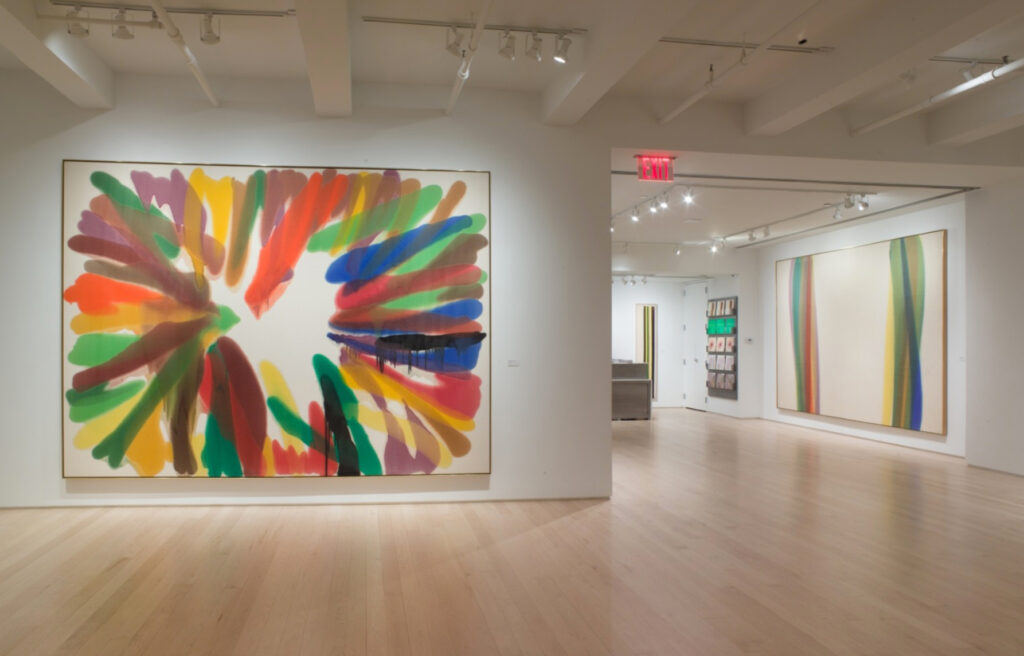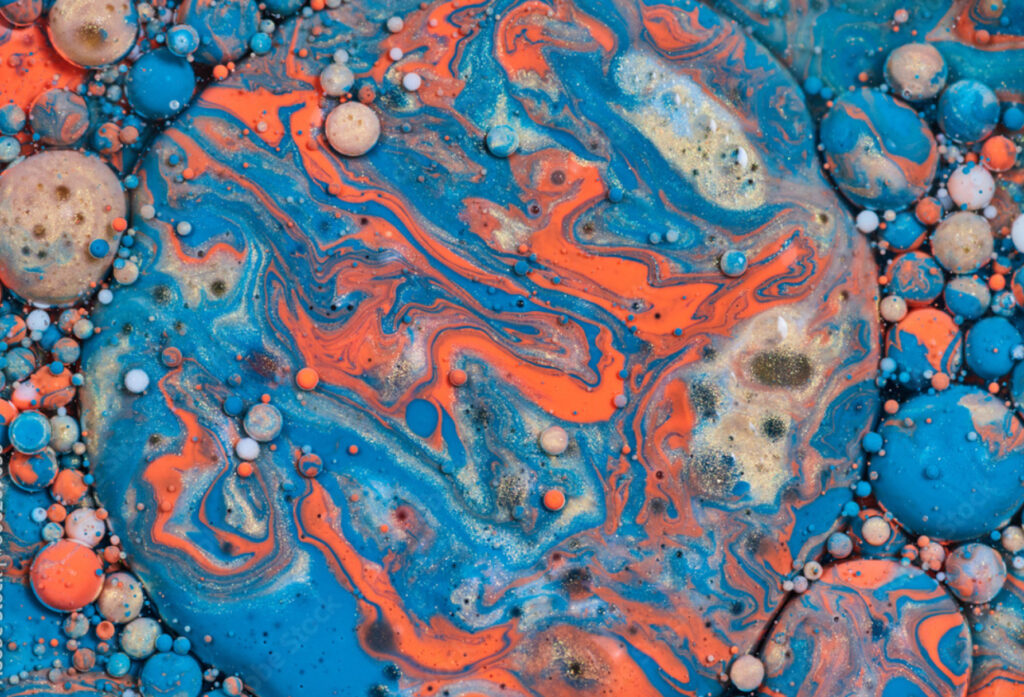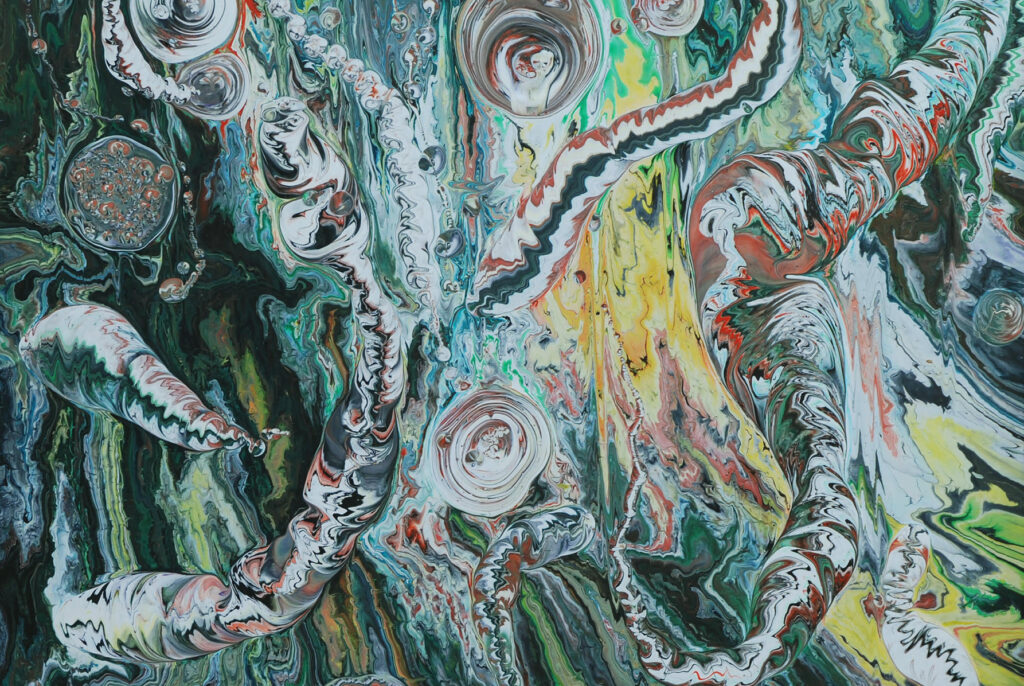Fluid acrylics have been a godsend. Despite their mass use and the large amount of kitsch that is produced, handled well these paints can deliver profound results. I started using them around 2009 and found I had a type of paint with which I could express myself with more originality and freedom.
The techniques of paint pouring are not new at all. Marbling and enamels for instance have been around for centuries, although largely confined to craft and decorative arts. The likes of Jackson Pollock and Morris Louis gave us an appetite for applying a more fluid material along with paint application akin to techniques rather than the strict notion of traditional drawing skills.

In recent years the advancement of highly stable fluid acrylics along with mediums and resins has birthed a plethora of paints that can provide amazing effects. This has led to an enormous popularity in the practice of paint pouring. Many artists have turned to this medium and many have or at least think they have suddenly become painters as they can easily produce dazzling effects. Social media images and thousands of videos/reels will show you the proliferation of these works. With careful investigation however, it doesn’t take too long to perceive how the vast majority are either merely crafts or unoriginal quasi art works.
When used to make art of a tacky nature they can easily deceive the eye. Often the material and method overrides all other considerations and they lack inspiration, originality, good use of colour and pictorial organisation. The discerning eye is the sieve that will tell you what is good and what is not. Historically cutting edge art has always had to battle it out in the field of its time. With hindsight the weeds tend to get taken away and we can see what was best. Today though, I would argue that this problem is bigger than ever, given the ease with which these materials can render such brilliant effects.

But there are also some highly gifted artists using these paints. As a contemporary, why wouldn’t you want to exploit new ways to move painting forward. Painters such as Marjorie Minkin, Graham Peacock, Ian Davenport, Bruce Piermarini, Peter G. Ray to name but a few, are all highly accomplished artists that have used pouring.
Pop and conceptual art and so much more has taken the attention away from what painting has always been; an outlet for a certain type of artist to show us new, beautiful and meaningful works. Historically the vast majority of painters that we consider masters were of a visual and experimental disposition. They took advantage of new materials and methods. This tendency inevitably brought the genre towards abstraction.
If you are a contemporary painter with serious aspirations that uses fluid paint you’re not just up against snobbery within the art establishment, but you can also easily get lost within what has become an ocean of fluid paint. But so much can be achieved with these paints if one applies themself with a strong visual aim. In the right hands these materials are worth pursuing. Don’t be put off by the gimmickry associated with these products. Give a bad tennis player a good racket won’t make much difference. Like any piece of good equipment, it has to be in the right hands.
